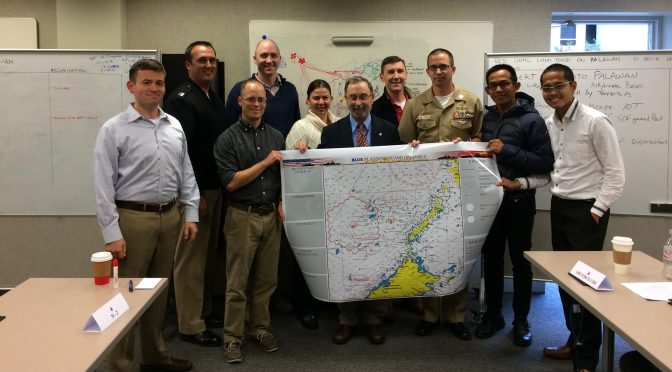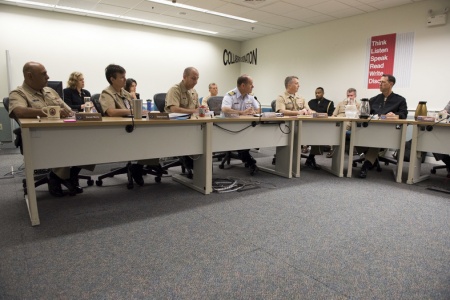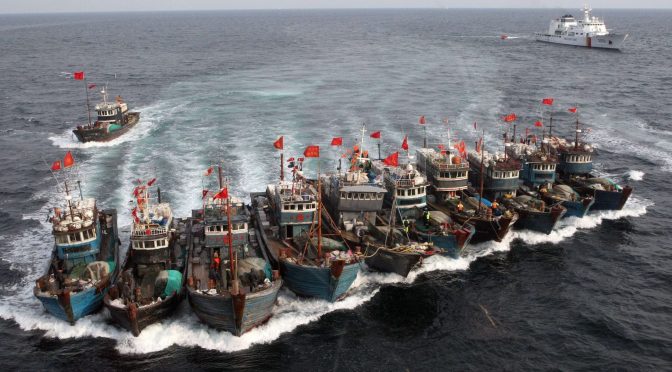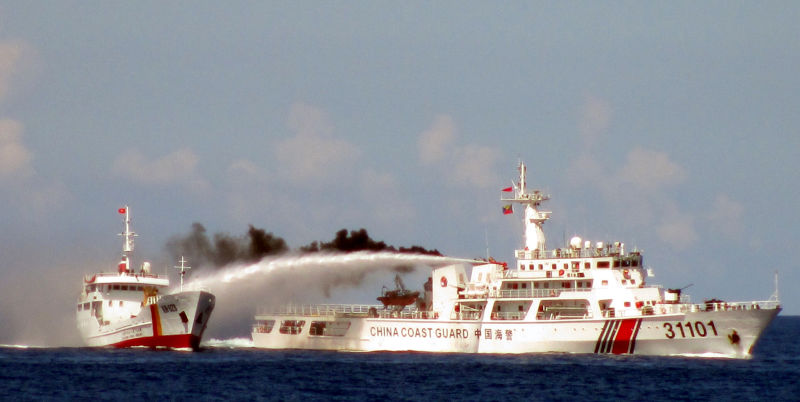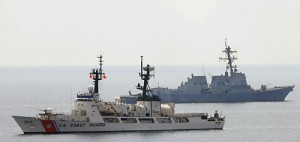By LT Megan McCulloch
At the Surface Navy Association (SNA) conference in 2015, Navy leadership announced the new concept of Distributed Lethality, and, in early January after a year of discussion and research, they further fleshed out the concept at this year’s SNA. According to ADM Peter Fanta, the Director of Surface Warfare (N96), one impetus for the concept was increasing the lethality of today’s ships under the current budget constraints. A year later, this is still relevant.[i] This year’s sound bite was “if it floats, it fights,”[ii] focusing on fighting in anti-access and area denial environments and “hunter-killer surface action groups,” which can “cause the adversary to shift his own defenses to counter our thrusts.”[iii]
Initially, my opinion of Distributed Lethality was that it was the current ‘flavor of the month,’ and I would pay more attention if it were still being discussed when I started Department Head School. This opinion changed dramatically when I participated as a Red Team member in an N96-sponsored game being developed by US Army, Air Force, and Indonesian Naval officers at the Naval Postgraduate School (NPS) to test various Adaptive Force Packages (AFPs) designed to optimize the Distributed Lethality concept. The Red Team was a mix of Indonesian and US naval officers familiar with the DL concept and given a large amount of latitude in how to employ our more varied forces (which included the full range of CRUDES and AMPHIB combat capability, as well as irregular forces). The AFPs used consisted of a mixture of LCS and DDG with notional 120nm Anti-Surface Weapons for the first scenario and an even broader high-low spread of DDGs and PCGs for the second. Our goal was to invade and conquer an island currently claimed by country yellow while also evading blue forces. The game was designed to force Phase 0 or 1 considerations and would end if a full-scale war developed – in which case both sides had lost.
The game was eye-opening on both the strategic value and execution challenges of Distributed Lethality. As one Red Team player described it, in this particular region and the given scenarios, Distributed Lethality was “operational deterrence with strategic ambiguity.” The game successfully showcased how the different AFPs give Distributed Lethality a greater level of flexibility and increase the options available to COCOMs across the range of military operations. The use of smaller ships also has implications for diplomatic as well as military engagement with partners, friends, and allies, possibly serving as an operational or strategic force multiplier. When I put myself in the adversaries’ shoes, the concept presented me with a level of ambiguity that gave me pause, not necessarily due to Red force’s intended actions against country yellow, but due to my unwillingness to overtly sink Blue forces. The AFPs perhaps offered less traditional deterrence in comparison with some of the other capabilities in the US Fleet, specifically the CSG. The AFPs provided an increased degree of logistical complexity, but the advantage of having multiple, smaller ships meant that the adversary would spend more time and resources on ISR. In the particular scenario presented, the additional ISR requirements were less of a strategic deterrent and more of an operational or tactical burden that introduced a level of ambiguity not otherwise present.
The value of Distributed Lethality, as tested in this particular war game, was of operational value; however, it also added complexity to the planning for the Blue team. Not only are the logistical challenges greater with a more dispersed force, but in the scenario given, the blurring between Red combatants and fishing vessels, as well as the use of disabling unconventional tactics [iv] was effective and were more difficult for the operational commanders to counter due to the political or tactical ramifications of any given reaction. While increased strategic ambiguity and disaggregated forces are strengths of the concept, they are also a potential weak point. As we give greater responsibility to and increase opportunities for early command commanders to operate in highly ambiguous situations, they need to have been exposed to and have trained to several different types of hybrid warfare specific to their area of operations before taking command.
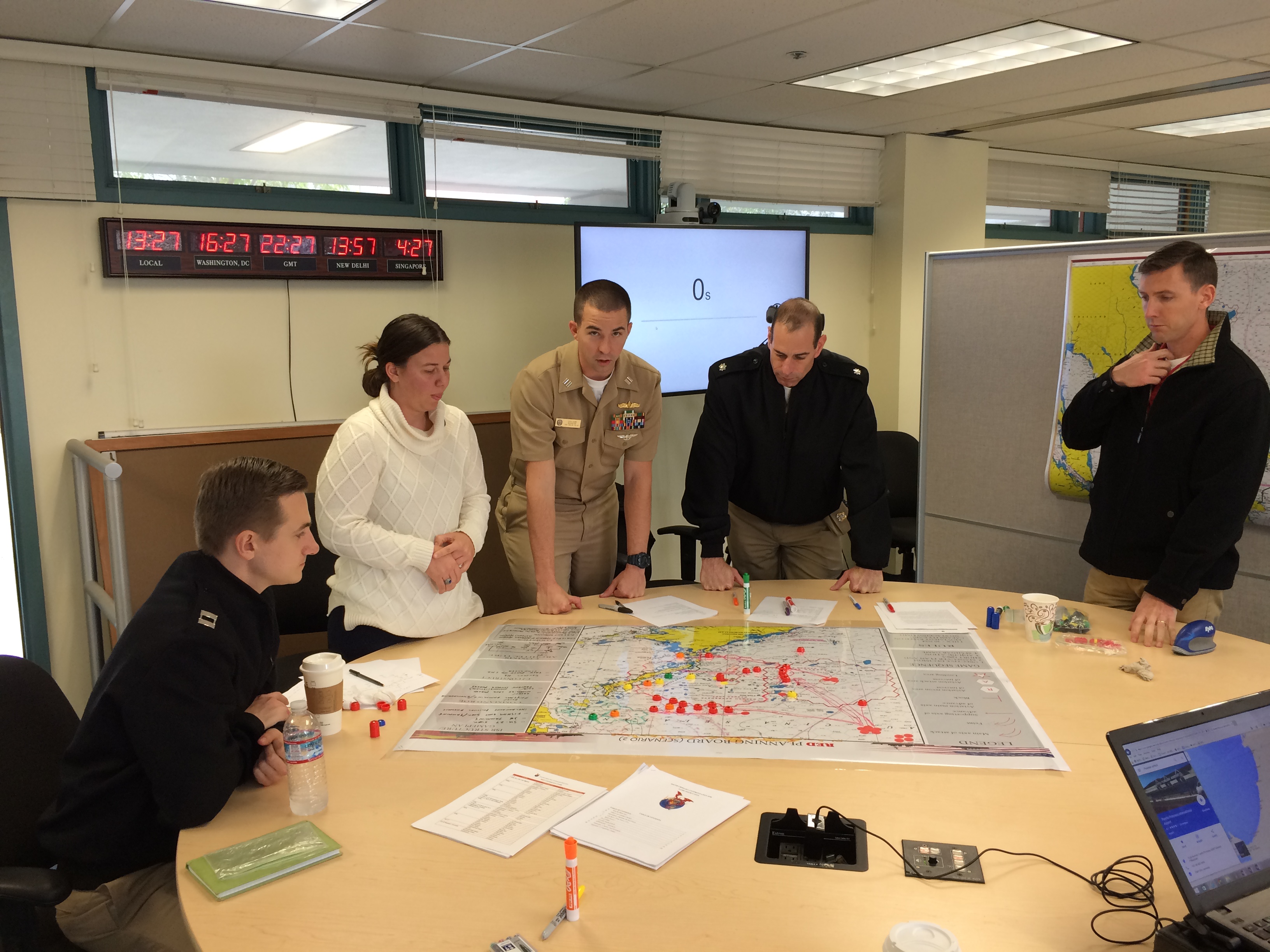
As the Red Team, we increasingly fell back on hybrid warfare to counter Blue forces, and in doing so, prevented escalation beyond Phase 1 and allowed off-ramps for either Blue or Red in which either country could back down. Of significant import was that all country Red members reacted more rationally and were less inclined to escalate disproportionately when faced with an AFP. During one scenario, when testing the reaction of Red Team to an AFP versus their reaction to a CSG, the presence of a US CVN immediately escalated tensions and at one point, the White Cell had to arbitrate against strong initial reactions that may have resulted in escalation to war. When the CVN was used instead of an action group, even well outside contested waters, the gut reaction of the Red Team was escalatory, provocative, and defensive.
In a world of shrinking military budgets and shifting ideas among political leadership about levels of engagement in various regions around the world, Distributed Lethality is more than window dressing. It is a way to affirm that while the US Navy may only add a few more ships every year, those ships will continue to punch above their weight class and pose an operational and even strategic challenge to opponents. It may also provide a way for better engagement with other nations using the smaller ships of an AFP rather than those of a traditional CSG. Distributed Lethality in the near term and at the operational level sounds like a modest shuffling of the current deck, but the longer term and particularly strategic implementations sold me on the concept as a whole. I hope that Distributed Lethality will continue to be developed to its fullest potential at all levels.
LT Megan McCulloch is a surface warfare officer and recent Naval Postgraduate School, Regional Security Studies graduate. The opinions and views expressed in this article are those of the author alone and are presented in her personal capacity. They do not necessarily represent the views of U.S. Department of Defense, the U.S. Navy, or any other agency.
Endnotes
[i] “SNA: Navy Surface Leaders Pitch More Lethal Ships, Surface Action Groups,” USNI News, January 14, 2015, http://news.usni.org/2015/01/14/sna-navy-surface-leaders-pitch-lethal-ships-surface-action-groups.
[ii] “A Year Into Distributed Lethality, Navy Nears Fielding Improved Weapons, Deploying Surface Action Group,” USNI News, January 13, 2016, http://news.usni.org/2016/01/13/a-year-into-distributed-lethality-navy-nears-fielding-improved-weapons-deploying-surface-action-group.
[iii] “‘Distributed Lethality’ | U.S. Naval Institute,” accessed February 11, 2016, http://www.usni.org/magazines/proceedings/2015-01/distributed-lethality.
[iv] “China’s Non-Kinetic Three Warfares Against America,” The Huffington Post, accessed April 8, 2016, http://www.huffingtonpost.com/peter-navarro-and-greg-autry/chinas-nonkinetic-three-w_b_8914156.html.
Featured Image: The NPS Fall Quarter Joint Wargaming Class looks at Distributed Lethality (photo: MAJ Reza Achwandi, Indonesian Navy)

